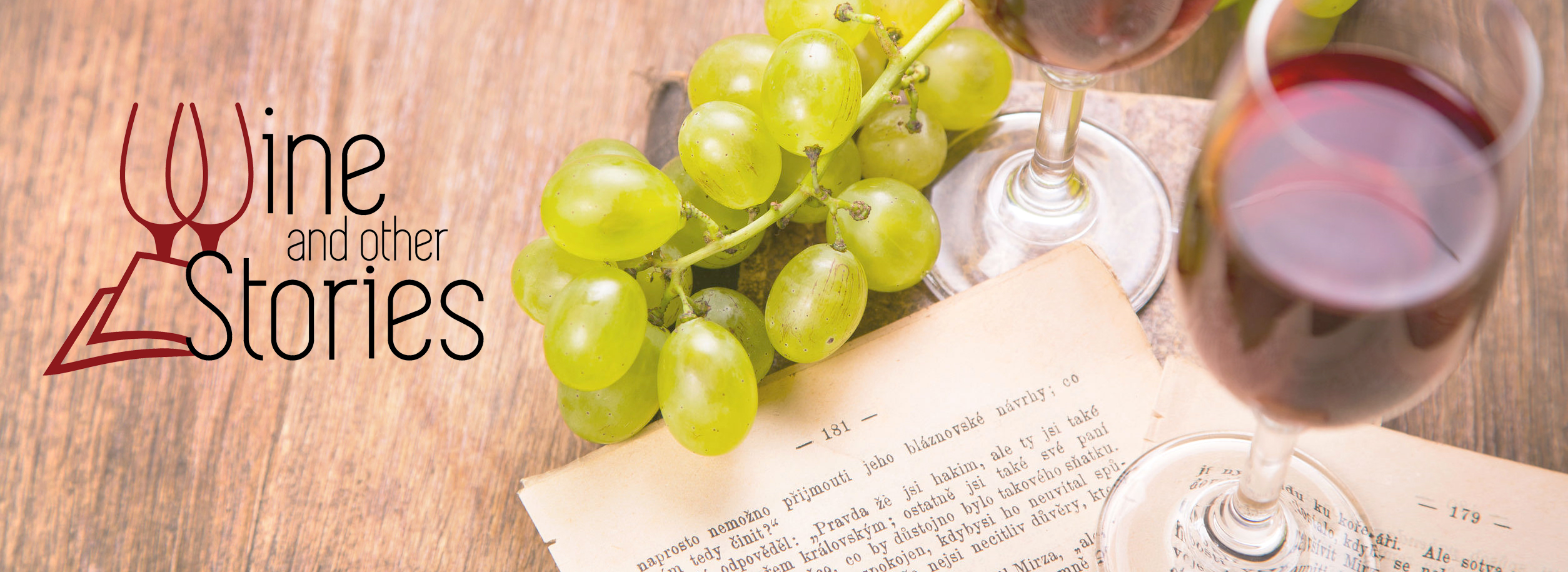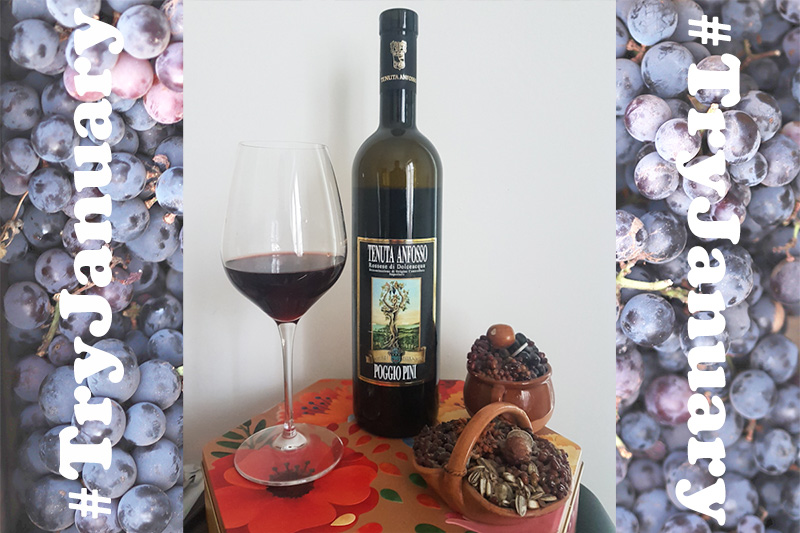Following the #TryJanuary tradition, this year my pick is a wonderful ‘Poggio Pini’ Rossese di Dolceacqua Superiore by Tenuta Anfosso. This elegant red wine comes from Liguria, in north west Italy. A must-visit region for every Italian winelover
After a boisterous Christmas break, some people turn to a popular self-inflicted initiative called #DryJanuary. This masochist proposition dictates an entire month of alcohol abstinence. While I appreciate it may work for some, I personally would advise moderation across all the twelve months of the year, or rather a “drink less but drink better” approach.
If you, like me, find #DryJanuary to be nonsense, I would recommend another initiative instead: #TryJanaury.
As I wrote in an earlier article, the idea behind #TryJanuary is to discover less widespread grape varieties or obscure wine regions. #TryJanuary helps broaden your vinous horizons, uncover new favourites and even find new wine travel destinations.
Recently I’ve had my share of wines made of lesser-known grape varietals or originating from off-the-beaten-track regions. Consequently, I’ve decided to dedicate my #TryJanuary article to a wine that stood out from the crowd: ‘Poggio Pini’ Rossese di Dolceacqua Superiore by Tenuta Anfosso.
Where the wine is from: Liguria
My #TryJanuary wine, ‘Poggio Pini’ Rossese di Dolceacqua Superiore by Tenuta Anfosso, comes from Liguria, in the north west corner of Italy.
Liguria is one of the smallest, albeit more dramatic regions in Italy. Lying just south of Piemonte, this crescent-shaped strip of land is nestled between Provence on the west and the Tuscan coast on the east. Liguria has a unique landscape. In Liguria’s dramatic topography, mountains merge with the coastline to create such gems as the popular tourist hamlets of the Cinque Terre.

The climate is Mediterranean and the majority of the cultivated land lies on rugged and poor soil. Liguria’s vineyards are as stupendous as the region’s vistas, with plots so steep that they appear to be falling straight into the sea.
Growing grapes in such conditions is a heroic endeavour. Therefore it is no surprise that the production of Ligurian wine is limited (in Italy only the tiny Valle d’Aosta region produces less wine).
In spite of the challenging viticultural conditions, Liguria has a long wine history. Vines were introduced in the regions by Etruscans and Greek something like 25 centuries ago.
The grape: Rossese
In Liguria there are several grape varieties called “Rossese”, both white and black skinned. The most famous (and noblest) of them is Rossese di Dolceacqua. It’s a black-skinned varietal which is named after the town of Dolceacqua, located in the province of Imperia, 120 kilometres south west of Genoa – Liguria’s most renowned city.
Researchers discovered that Rossese di Dolceacqua is genetically identical to Tibouren, a French local grape variety widespread in Provence. It is unclear if the grape is of Italian origin and was later introduced to France or vice versa. Of course, the story differs whether you ask French or Italians!
Rossese di Dolceacqua is a finicky grape variety. It’s early ripening, susceptible to disease and difficult to grow. This cultivar has thin skin, which means generally lower tannins. It also seems that Rossese di Dolceacqua can perform well only in specific terroirs. According to many Italian vintners, Rossese di Dolceacqua’s ideal terroir is made up by a combination of several factors: well-drained clay-calcareous-sandy solis, ventilated hillsides and moderate altitude. For all these reasons, Rossese di Dolceacqua really shines only in a small proportion of Liguria.

The appellation: Rossese di Dolceacqua DOC
Rossese di Dolceacqua is also the name of the best-known Rossese-based appellation in Liguria. Unsurprisingly, Rossese di Dolceacqua DOC wines are made entirely from the Rossese di Dolceacqua grape.
The DOC surface overlaps with the area where the grape performs the best – which is around the towns of Imperia and Dolceacqua, in the westernmost part of Liguria.
Within the DOC zone, a few grand crus are recognised – these are districts with superior terroirs, where the Rossese grape does particularly well. One of these gran crus is “Pini”, located within the Soldano area. ‘Poggio Pini’ Rossese di Dolceacqua Superiore by Tenuta Anfosso, my #TryJanuary wine, comes from the Pini gran cru.

The wine: Poggio Pini Rossese di Dolceacqua Superiore by Tenuta Anfosso
I tried my #TryJanuary wine, ‘Poggio Pini’ Rossese di Dolceacqua Superiore by Tenuta Anfosso, during my last days at my parents’ home, before heading back to London.
My mother had cooked a mouthwatering cuttlefish ragu for lunch, and I was looking for a nice wine to pair with that typical Puglian delicacy. I feared the whites I had weren’t strong enough to withstand the bold cuttlefish ragu flavours. When pairing seafood-based dishes and red wine, you should really look at tannins. I chose this Rossese di Dolceacqua because I knew the grape’s tannins are not pronounced. It was a great match (<<pats himself on the back>>).
‘Poggio Pini’ Rossese di Dolceacqua Superiore by Tenuta Anfosso has a Burgundian quality. It’s elegant and harmonious. This wine also reminded me of an aged Barolo – just with less tannins. The seven years of age in bottle showcased a great early-stage evolution, with some tertiary flavours beautifully complementing the red fruit and balsamic undertones. Full tasting notes are below for you to enjoy!
Tenuta Anfosso - "Poggio Pini" Rossese di Dolceacqua Superiore, 2015


Tenuta Anfosso’s history dates back to 1888, when Giacomo Anfosso planted the family’s first vines in the Poggio Pini vineyard. Today, Alessandro Anfosso and his wife Marisa Perrotti are the family’s third generation of winemakers. They painstakingly cultivate 5 hectares of steep and labour-intensive vineyards all by hand (mechanisation is impossible under such demanding conditions).
Their website recites as such: “Passion and love are required for a land which is hard but also capable of giving great satisfactions, in terms of quality of grapes and wine”. Well said!
For ‘Poggio Pini’ Rossese di Dolceacqua Superiore, the grapes are sourced from the old part of the Pini vineyard. After fermentation, the wine is aged for 12 months in stainless steel vats, followed by 8 months in the bottle before release.
The wine exhibits a ruby to garnet hue, with medium intensity of colour. On the nose, the flavours are pronounced, refined and aromatic. Redcurrant, wild strawberry and juicy red cherry notes alternate with whiffs of rose petals, white pepper, juniper and a touch of dried red berries. These scents are wrapped by balsamic notes mixed with leather and English tea.
On the palate, it’s full in body, yet fragrant and full of energy. In the attack, fresh and dried red fruit notes dance with rose, violet, potpourri, tea leaves, autumn shrubs, leather and asian sweet spices. The flavours progress into balsamic underbrushes which echo a splendid integration between fruity and flowery components.
High in acidity, with a crunchy yet textured mouthfeel. Tannins are medium in level, refined and fine-grained. It’s an elegant wine, with poise and harmony. Pronounced intensity of flavours, but not brash. Medium to long finish. An outstanding wine.
Conclusion
I hope you enjoyed my article dedicated to ‘Poggio Pini’ Rossese di Dolceacqua Superiore by Tenuta Anfosso, my #TryJanuary wine for 2023.
I really do encourage you to try out #TryJanuary, and have fun with unheard grape varieties or unsung wine regions. After all, one of the many pleasures of wine is to discover traditions and places – so every excuse to do so sounds like a good idea to me!

